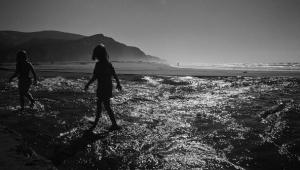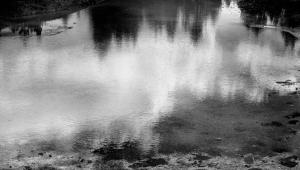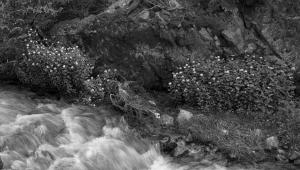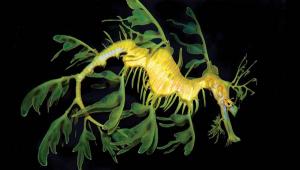Slightly Diffused: Controlling Point Source And Hot Light
Diffusion Disc
Ashleen is using a collapsible diffuser (26” Flexfill) to block the sunlight from falling on Anne Marie (#1). The semi-translucent fabric prevents the sun from falling on the subject, which can be seen by the shadow cast on Anne Marie. If we look at a medium close-up of Anne Marie we can see that the sunlight is filtered on her face casting an even, pleasant illumination (#2). Using this method is great if you want a one to one lighting ratio outdoors by just shading the sunlight falling on your subject. This method usually requires a helpful assistant to hold the diffuser, although some folks use a light stand and a C clamp to good advantage.
Nikon D700, Nikkor 24–120mm lens, f/9, 1/250th, ISO 250, daylight balanced 5600K.

All Photos © Chuck Gloman, All Rights Reserved
Flash And Diffusion Material
If you desire a little less blockage of the sun while still allowing it to fall on your subject’s hair, I usually use a piece of Rosco 3026 Tough White Diffusion material (www.rosco.com). Available in easily manageable sheets, I simply have a assistant hold the diffusion material so the daylight balanced flash is shooting through it (in this case a Nikon SB900 flash). With the fill flash diffused by the material, I still have enough fill light on Cait’s face. The sun is providing the backlight on her hair. Because the diffused flash is still pointed directly on her face, her eyes sparkle from the light (#3).
Nikon D700, Nikkor 24–120mm lens, f/14, 1/320th, ISO 400, daylight balanced 5600K.

Diffusion Panel
Needing a larger area of diffusion, I used a 12xt12’ piece of silk fabric attached to a metal frame then mounted on four C-stands. Outdoors, each stand must be weighted with a sandbag to avoid it tipping over or becoming a sail when the wind increases. In the set up process, I had Max and Cat lay on the ground for a casual, evenly lit portrait (#4). Because the sunlight is filtered by the fabric, they both receive an even amount of flat illumination. Because they are on the grass, we don’t need a backlight.

When our 2010 Yellow Chevrolet Camaro arrived and was parked under the silk (that’s why I needed such a large sheet of diffusion), Kristen leaned against the front fender (#5). In this shot, I purposely allowed the diffusion material to be seen in the background (and reflect on the Camaro’s hood). Without this diffusion, the yellow finish of the car and Kristen’s pale skin tone would have been very difficult to properly expose. In this instance, the sun was still providing a little backlight, but an even illumination is falling on her as well as the car.
Nikon D700, Nikkor 24–120mm lens, f/7.1, 1/80th, ISO 200, daylight balanced 5600K.
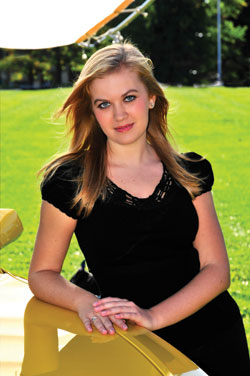
Tungsten Light
Moving to an indoor set-up with tungsten illumination, a 750 watt Mole Richardson Tweenie (a tungsten balanced Fresnel, www.mole.com) served as the key source. I wanted slightly more diffusion than the glass lens of the unit provided. I used a piece of Rosco’s Tough Spun diffusion clipped to the Tweenie’s barn doors and tented it (curved in front of the light instead of hung vertically and rigid). This “tenting” spreads out the light, illuminating a larger area and softening it in the process. The result was a very even key light on the camera left side of Anne Marie’s face without the need for a fill. There is a strong shadow on Anne Marie’s face camera right, but a fill light could have removed that if desired (#6). The only other illumination is a 250 watt Mole Richardson Inky as a backlight.
Nikon D700, Nikkor 24–120mm lens, f/5.3, 1/80th, ISO 250, tungsten balanced 3200K.

Chuck Gloman is the Chair of the TV/Film Department as well as an Associate Professor at DeSales University. He may be reached chuck.gloman@desales.edu.
- Log in or register to post comments


